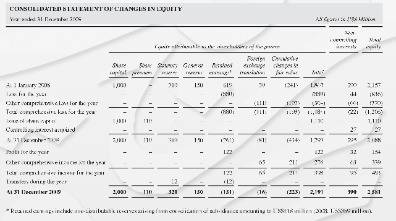
The data must be presented in neat and clean so even a layman can understand the information. Accounting information is very reliable for this auditor, audit the account from time to time. The information is free from any error and manipulation and can be used by the users.

Along those lines, information should be recorded in a consistent manner, following general accounting principles. Those who view the data want to know that the accounts during quarter one were handled the same way as they were during quarter three. This also enables third parties to compare data between companies for investment purposes when they know these principles have been maintained. The practices of using the least optimistic estimate when two estimates of amounts are about equally likely. Conservation means a tendency to play safely while presenting the information through financial statements.
What are the qualitative characteristics of accounting
Financial reports of different firms are not able to achieve comparability because of differences in business operations of companies and also because of the management’s viewpoints in respects of their transactions. Also, because there are different accounting practices to describe basically similar activities. To make a difference in the decision process, information must possess predictive valueconfirmation of investor expectations about future cash-generating ability. And/or feedback value.confirmation of investor expectations about future cash-generating ability.
- In some situations, however, it may be necessary to sacrifice some of one quality for a gain in another.
- Of accounting practices over time permits valid comparisons between different periods.
- Commerce Mates is a free resource site that presents a collection of accounting, banking, business management, economics, finance, human resource, investment, marketing, and others.
- By the above discussion we can observe one fact that all four principal characteristics are interrelated and higher level is achieved in one area at the expense of the other.
However, the understandability of financial information varies considerably, depending on the background of the user. The financial information should be comprehensible to those who are willing to spend time to understand it. Comparability helps the users of financial information to differentiate, analyze, improve, and make decisions.
Reliability
Send readers directly to specific items or pages with shopping and web links. Make data-driven decisions to drive reader engagement, subscriptions, and campaigns. The reliability of data depends on the traceability of data and its source documents. Example of Relevance – A firm is expected to provide the total amount owed by the debtors on the balance sheet, whereas the total number of debtors is unimportant.
Willingness to pay (WTP) for HIV and AIDS services in Africa: a … – Journal of Global Health Reports
Willingness to pay (WTP) for HIV and AIDS services in Africa: a ….
Posted: Tue, 29 Aug 2023 09:42:54 GMT [source]
These improvements are needed to serve users’ needs in changing circumstances. When it is found that current practices or presentations being followed are not fulfilling users’ purposes, a new practice or procedure should be adopted. Relevance and reliability are the two primary characteristics that make accounting information useful for decision-making. Ideally, financial reporting should produce information that is both more reliable and more relevant. In some situations, however, it may be necessary to sacrifice some of one quality for a gain in another. The entire concept of financial accounting is to create and compile useful information for investors, creditors, and other decision makers outside the business entity.
More Related Content
Reliable information is required to form judgements about the earning potential and financial position of a business firm. In today’s society, corporate annual reports are in excess of 100 pages, with significant qualitative information. Information that is understandable to the average user of financial statements is highly desirable. It is common for poorly performing companies to use a lot of jargon and difficult phrasing in its annual report in an attempt to disguise the underperformance. Timeliness is how quickly information is available to users of accounting information. The less timely (thus resulting in older information), the less useful information is for decision-making.
It follows that relevant information must be reported Relevance has been defined in accounting literature, but no satisfactory set of relevant items of information has been suggested. In this regard, an important task is to determine the needs of user(s) and the terms of information that are relevant to target user(s). In today’s complex financial accounting environment, a general purpose report aims to fulfil the common needs of users so that information should be relevant to all users. In judging relevance of general purpose information, attention is focused on the common needs of users and specific needs of particular users will not be considered in this relevance judgement.
Timeliness means having information available to decision-makers before it loses its capacity to influence decisions. If information is either not known when it is needed or becomes available long after the reported events that it’s no value for future action, lacks relevance, and is of little or no use. Still, a scarcity of timeliness can rob information of relevance it’d otherwise have had. While comparing the financial information between different companies or different economic periods of the same company, the qualitative factors assist in understanding and analyzing the data. Both the quantitative and qualitative go hand-in-hand for the smooth functioning of the business as they have equal importance and requirement. Moreover, these characteristics assist the users of financial information in forming predictive and informed decisions on time.
Users of Accounting Information may be categorized into Internal Users and External Users. Qualitative characteristics are the qualities or attributes that make financial accounting information useful to the users. To satisfy the stated objectives, information should possess certain characteristics. The purpose of SFAC 2 is to outline the desired qualitative characteristics of accounting information. Representational faithfulness To gain insight into this quality, consider a map. When it shows
roads and bridges where roads and bridges actually exist, a map possesses representational
faithfulness.
Explain the qualitative characteristics of accounting information?
It is, above all, the predetermination of a desired result, and the consequential selection of information to induce that result, that is the negation of neutrality in accounting. To be neutral, accounting information must report economic activity as faithfully as possible, without colouring the image it communicates for the purpose of influencing behaviour in some particular direction. Also, full disclosure should be made of the alternative method applied and, whenever practical, of the monetary difference resulting from deviations from the standard. To conclude, consistency is desirable, until a need arises to improve practices, policies, and procedures.

It can be argued that if in the interest of timeliness, the reliability of the information is sacrificed to a material degree, the usefulness of the information may be adversely affected. Therefore, accounting facts and accounting practices should be impartially determined and reported with no objective of purposeful bias toward any user or user group. If there is no bias in selection of accounting information reported, it cannot be said to favour one set of interests over another. It may, in fact, favour certain interests, but only because the information points that way. Consistency in the use of accounting procedures over a period is a user constraint, otherwise there would be difficulty in making predictions. If different measurement procedures are adopted, it is difficult to predict trends in earning power or financial position of a company.
Comparability is the degree to which accounting standards and policies are consistently applied from one period to another. In addition, comparability also refers to the ability to easily compare a company’s financial statements with those of other companies. In making decisions, the decision-maker will compare alternatives facilitated by financial information. Comparability implies possessing things reported during an identical fashion how to read a balance sheet and in contrast to items reported differently. Comparable financial accounting information presents similarities and differences within the enterprise or enterprises and their transactions, not merely from differences in financial accounting treatment. For example, a net income forecast provided by the management of a company may possess a high degree of relevance to investors and creditors trying to predict future cash flows.
A standard could require less disclosure from a small enterprise than it does from a large one without having its neutrality impugned. Nevertheless, in general, standards that apply differently need to be looked at carefully to ensure that the criterion of neutrality is not being violated. Commerce Mates is a free resource site that presents a collection of accounting, banking, business management, economics, finance, human resource, investment, marketing, and others. In this article, we have explained the all top qualitative characteristics of Accounting Information. The organization must ensure that the financial information is verifiable for accurate predictions. This involves validating the financial information using several measures and assumptions to produce the same results.
When comparability exists, reported differences and similarities in financial information are real
and not the result of differing accounting treatments. Comparable information reveals relative
strengths and weaknesses in a single company through time and between two or more companies at
the same time. Timeliness Timeliness requires accountants to provide accounting information at a time when it
may be considered in reaching a decision. To know what the
net income for 2010 was in early 2011 is much more useful than receiving this information a year later. If information is to be of any value in decision making, it must be available before the decision is made. In determining what constitutes timely information,
accountants consider the other qualitative characteristics and the cost of gathering information.

Recent Comments